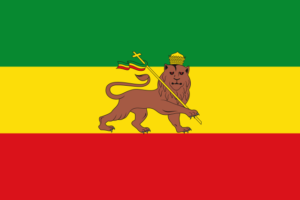Ethiopia Shall Stretch Out Her Hand
A story from the Bible that resonates with me deeply is the story of Philip and the Ethiopian Eunuch found in Acts 8:26–40. The Bible only says the Ethiopian was in the service of his Queen, returning home from worshiping in Jerusalem, and reading the book of Isaiah. However, a brief introduction into the history of Ethiopia can enable us to see God’s love and faithfulness generation after generation.
The land of Cush, or modern day Ethiopia, is mentioned 37 times in the Old Testament and once in the New Testament in Acts 8. The first mention of Ethiopia/Cush in the Bible is found in Genesis 2:13. “The name of the second river is the Gihon. It is the one that flowed around the whole land of Cush.” From this, we can surmise that Ethiopia has been around since creation. It has gone by other names in history including the Kingdom of Aksum and Abyssinia.
1 Kings 10:1–13 and 2 Chronicles 9:1–12 recount the story of King Solomon and the Queen of Sheba (Saba) who was also known at the time as the Queen of Aksum, and her given name, Makeda. In the New Testament, Jesus Christ refers to her as the Queen of the South (Matthew 12:42, Luke 11:31). The Queen of Sheba sought King Solomon for his wisdom and became one of the earliest Gentile rulers who believed in the God of Israel. In gratitude, she gave Solomon a large fortune. The Bible tells us that in exchange for her gifts, King Solomon gave her all she desired.
Considering Solomon’s reputation with women, including women of foreign lands, it may come as no surprise that according to Ethiopian historical records, the Queen of Sheba gave birth to his son, whom she named Menyelek. The historical text, The Kebra Nagast (“Glory of the Kings”), tells of Solomon’s relationship with the Queen of Sheba and their son Menyelek, the first King of Ethiopia. Historical records point to this series of events as establishing the Solomonic bloodline of Ethiopian Kings that lasted from the time of King Solomon until 1974.
According to The Kebra Nagast, a wealthy Ethiopian merchant named Tamrin visited Solomon’s court first and told the Queen of Sheba about King Solomon. She went to meet Solomon herself and conceived a son. When their son Menyelek came of age, the Queen asked Tamrin to take Menyelek to Jerusalem to meet and learn from his father. Their journey took them the route through Gaza-most likely the same route taken by the Ethiopian Eunuch in Acts. Upon hearing of her son’s return, the Queen of Sheba gave thanks and praised God for her son’s safe return. She then made the nobles of Ethiopia take an oath that only the male descendants of Solomon could rule Ethiopia. While the Bible only tells of the meeting of King Solomon and the Queen of Sheba, Ethiopians would have learned of these events as later documented in The Kebra Nagast. As far as the Ethiopian mentioned in Acts was concerned, he was in service to a royal house that was a direct descendant of David through Solomon.
The Queen of Sheba’s return from Jerusalem marked the time when Ethiopia started to worship the God of Israel and turn away from paganism. As a result of this spiritual awakening, trade and pilgrimage between Ethiopia and Jerusalem became common. One can imagine that the route traveled by the Ethiopian in Acts 8 had been traveled countless times before by his countrymen. As a high-ranking member of the royal court of Ethiopia, going to Jerusalem to worship would not be unusual. However, this Ethiopian stands out in two ways. First, we know that he was in control of the vast wealth of the Queen’s treasury—he could afford to travel long distances by chariot, and could also afford the expense of a scrolled copy of the book of Isaiah. Second, he was a very learned man. In addition to speaking his native language, he also could read and understand Hebrew.
So… who is this man that Philip met? Without knowing some historical context, it is easy to see the Ethiopian as the object of Philip’s actions instead of the subject of God’s grace. Philip met an Ethiopian Eunuch, true. In that Ethiopian he met a wealthy, learned man, of high standing in society, who’s nation had a deep history with Jerusalem and God. A man who was a Gentile believer in God, who was returning from worshiping in Jerusalem. Even after worshiping in Jerusalem, the epicenter of Judaism; he still didn’t comprehend what he was reading. However, when asked that critical question by Philip as to whether he understood the book of Isaiah, the Ethiopian did not hesitate to say “No” and to ask for help. “How can I, unless someone guides me?…” Acts 8:31.
Just like the Queen of Sheba sought wisdom from Solomon and encountered God, so too did this Ethiopian seek a deeper understanding of scripture from Philip, encounter Christ, and become baptized. Neither the Bible nor The Kebra Nagast elaborate further on the life of this Ethiopian upon his return home. Many attribute the spread of Christianity in the region to him. What we do know from historical records is that the first Christian Emperor in the World was the Ethiopian, Negus Negaste Ezana, who reigned from 320–356 AD. He made Christianity the official religion of Ethiopia and Ethiopia was the first nation in the world to put the crucifix on its coin currency. For as it is written in Psalm 68:31 “…Ethiopia shall stretch forth her hand to God.”
End Note:

The flag of the Ethiopian Empire includes the Lion of Judah and a processional cross.
When the last of the Solomonic Kings of Ethiopia was killed in 1974, this flag was no longer used.
